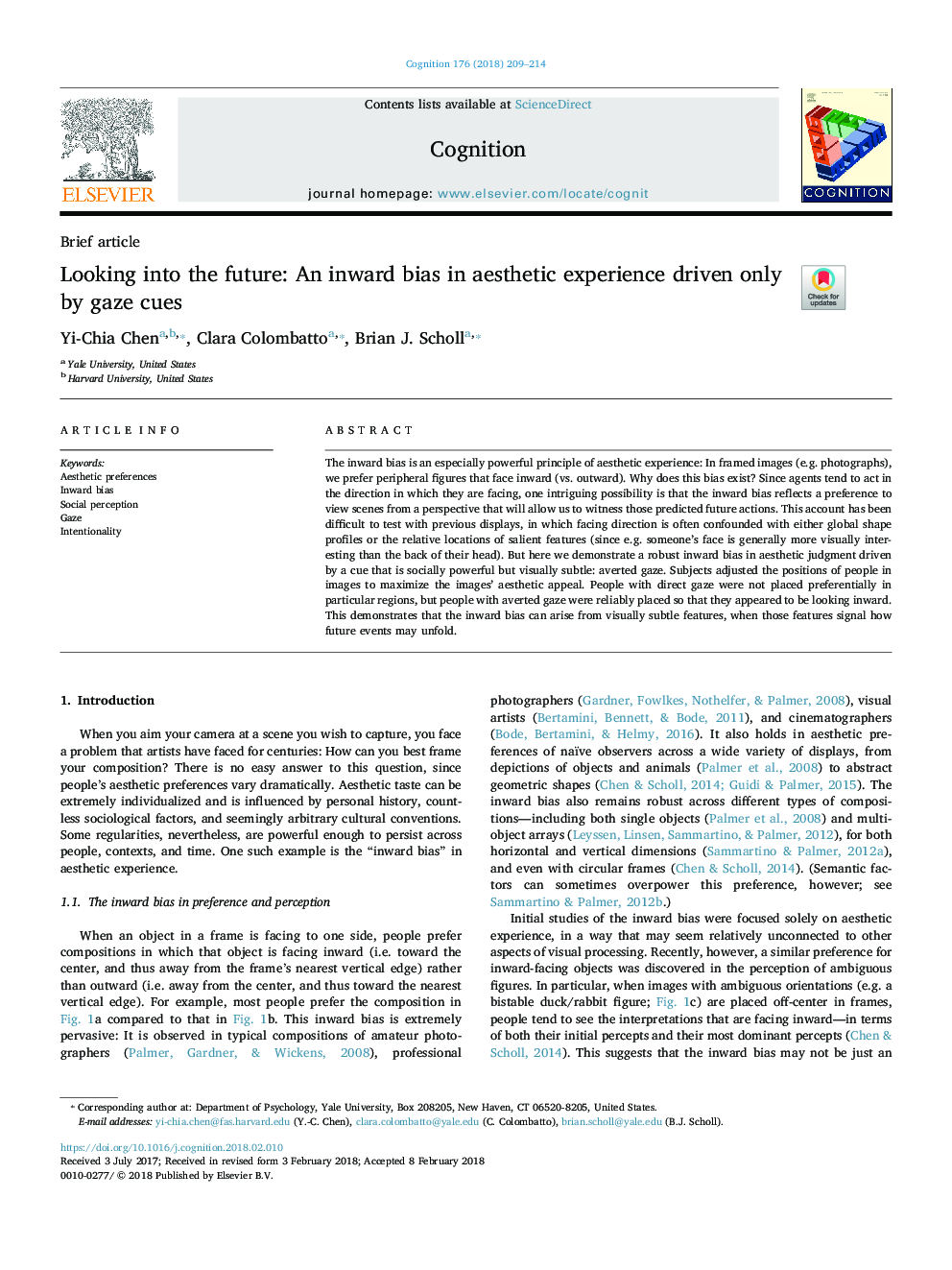| Article ID | Journal | Published Year | Pages | File Type |
|---|---|---|---|---|
| 7285360 | Cognition | 2018 | 6 Pages |
Abstract
The inward bias is an especially powerful principle of aesthetic experience: In framed images (e.g. photographs), we prefer peripheral figures that face inward (vs. outward). Why does this bias exist? Since agents tend to act in the direction in which they are facing, one intriguing possibility is that the inward bias reflects a preference to view scenes from a perspective that will allow us to witness those predicted future actions. This account has been difficult to test with previous displays, in which facing direction is often confounded with either global shape profiles or the relative locations of salient features (since e.g. someone's face is generally more visually interesting than the back of their head). But here we demonstrate a robust inward bias in aesthetic judgment driven by a cue that is socially powerful but visually subtle: averted gaze. Subjects adjusted the positions of people in images to maximize the images' aesthetic appeal. People with direct gaze were not placed preferentially in particular regions, but people with averted gaze were reliably placed so that they appeared to be looking inward. This demonstrates that the inward bias can arise from visually subtle features, when those features signal how future events may unfold.
Related Topics
Life Sciences
Neuroscience
Cognitive Neuroscience
Authors
Yi-Chia Chen, Clara Colombatto, Brian J. Scholl,
